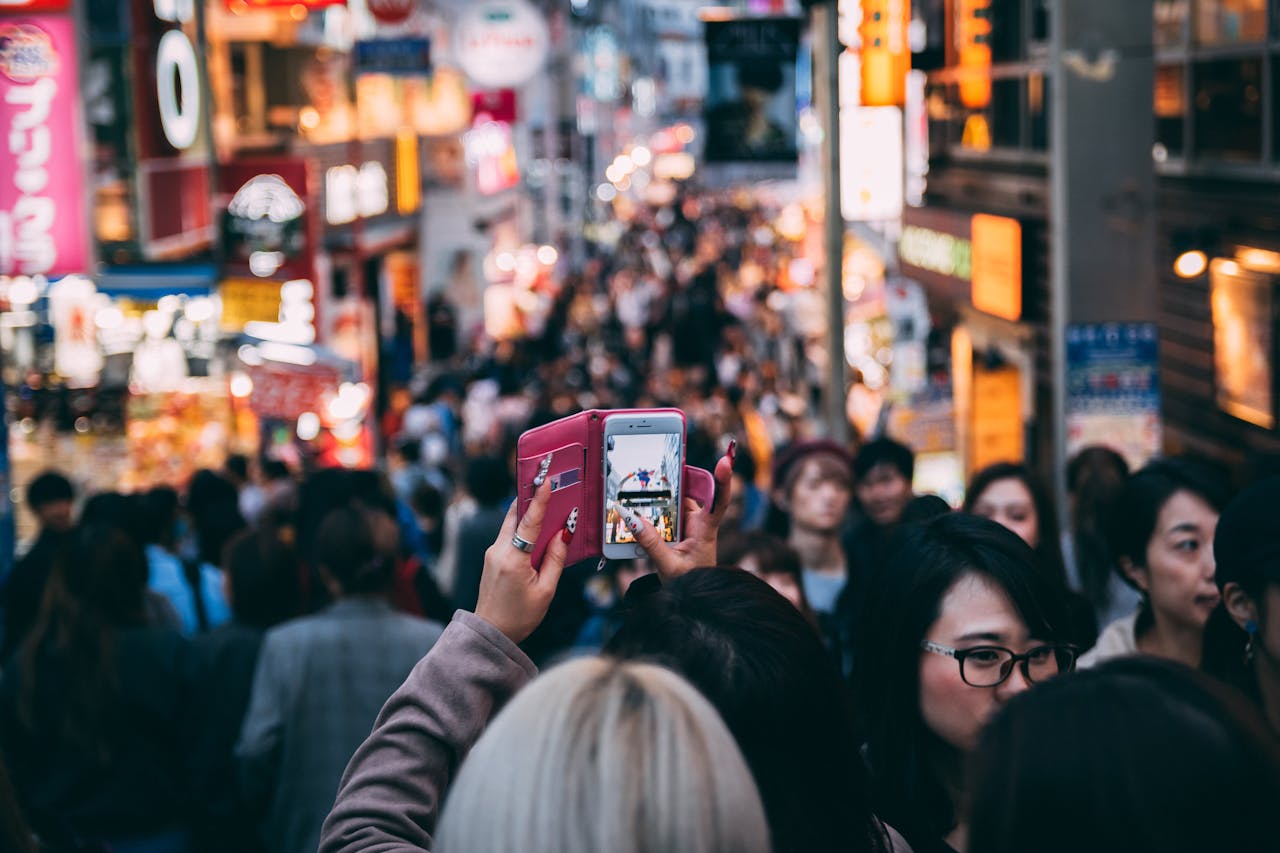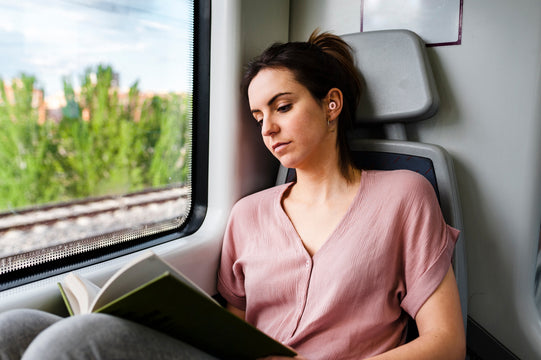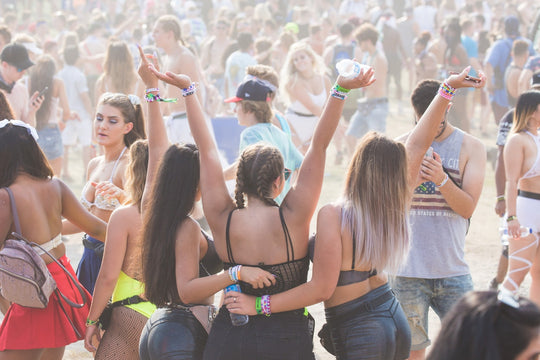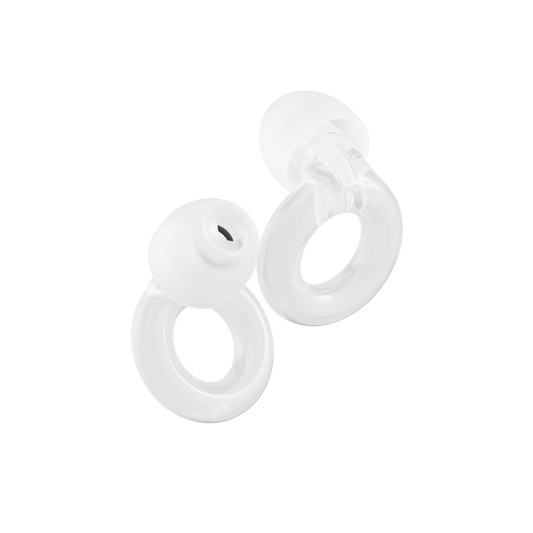Key highlights:
- Cities like Mumbai, Cairo, and New York top the list with noise levels often exceeding safe limits.
- Persistent noise from traffic, construction, and social events diminishes quality of life and poses significant health risks.
- It’s crucial to protect your hearing health in bustling environments by using noise-reducing earplugs to reduce exposure to harmful noise levels.
Bustling traffic. Roadworks. Sirens. Cities are loud – there’s no two ways about it. But some are louder than others. Here’s our guide to the noisiest cities in the world – and our top tips for reducing the impacts of noise pollution in loud urban environments.


Introduction to noise pollution in urban areas
We love the hustle and bustle of big cities, but it does come at a price: noise pollution. The definition of noise pollution is “unwanted or disturbing sounds” – which, in practice, is any sound that interferes with your daily life, affecting your sleep, disturbing conversations, or otherwise reducing your quality of life.
But not all noise is noise pollution. The World Health Organization (WHO) defines noise pollution as anything over 65 decibels, and there is the possibility of hearing damage after exposure to sounds at 85 decibels for 8 hours or more without protection. In the US, acceptable noise levels during the day are 75 dB maximum, and 70 dB at night.
But, of course, it’s not always possible to keep noise below this level – as anyone who lives in a city can attest to. Noise pollution can come from various different sources, including traffic, construction, industrial activities and social events. In a busy urban environment, that can create a persistent din that’s always in the background.
Noise pollution is more than just an annoyance – it’s a major health risk. A report by the European Environment Agency found that 20% of Europe’s population are exposed to long-term noise levels that are harmful to their health – and it’s a problem that’s found in cities all around the world. Prolonged exposure to high noise levels can lead to numerous health issues including hearing loss, cardiovascular issues, sleep disturbances and stress. For many city dwellers, the effects of noise pollution are serious, with relentless noise diminishing their overall quality of life, impacting mental health and reducing productivity.
Top 10 noisiest cities in the world
So, where are the noise hotspots around the globe? Here are the ten noisiest cities – and there’s no surprise to learn that they’re also some of the biggest cities in the world.
Dhaka, Bangladesh
Dhaka is, according to a United Nations Environment Program (UNEP) report, the loudest place in the world, recording decibel levels of 119. And a study by Bangabandhu Sheikh Mujib Medical University found that as many as 65% of traffic police in the Bangladesh capital (widely considered to be the most densely populated built up area in the world) face hearing and sleeping problems.
So, the noise levels in the city are beyond a mere annoyance, having a serious impact on public health – and it’s no wonder when noise levels are almost double the recommended safe limits. Such high noise levels can lead to hearing problems and sleeping problems, as seen in the traffic police, but also increased blood pressure, high stress levels and anxiety.
10M+ happy customers
Our earplugs
Mumbai, India
Mumbai is the biggest city in India and along with that comes high levels of noise, with noise frequently exceeding safe levels. During rush hours, traffic noise levels can reach up to 85-100 decibels (dB) in congested areas. One of the most persistent problems in Mumbai is honking – so much so that “No Honking Days” have been implemented, although the success of these is up for debate.
Away from the highway, marketplaces can reach levels of 80-90 dB thanks to the bustling activity of traders, shoppers, and street vendors.
There’s also ongoing construction work around the city, including the extension of the metro system, Drilling, heavy machinery and other construction work frequently measures above 90 decibels, again well above safe noise levels.
Ho Chi Minh City, Vietnam
The UNEP report found that Ho Chi Minh City has average noise levels of 103 decibels. Noise in the city – like any other – comes from a variety of sources, but like Mumbai, there is a lot of traffic noise. During rush hours, traffic noise levels can reach up to 85-95 decibels (dB) in congested areas such as District 1, District 3, and District 5. The main sources include motorbikes, cars, buses, and the omnipresent honking.
The report also found that cyclists are exposed to noise levels above 78dB, which can cause irreversible hearing loss.
Moradabad, India
The UNEP report also found incredibly high levels of noise in Moradabad, citing 114 decibels at the highest. All of the usual factors are at play in Moradabad, with high levels of traffic noise, as well as construction works and manufacturing noise, as a major industrial city.
But there’s another factor that’s perhaps less expected. The Times of India reported that the emergency services in Uttar Pradesh (where Moradabad is located) received over 14,000 noise pollution complaints in 2021, with the majority of complaints relating to loud music being played at weddings after 10pm.
Cairo, Egypt
The capital of Egypt and the country’s largest city, Cairo is also one of the noisiest cities not just in Egypt but in the world. According to a study by the Egyptian National Research Centre, average noise levels are at 90 decibels in the city and never drop below 70 dB.
As in other cities, noise pollution comes from various sources – but one of the primary factors is loud traffic, and persistent honking. The city's roads are often congested with cars, buses, taxis, and motorcycles, and the persistent noise has an impact on both residents and tourists, putting hearing at risk and increasing stress levels.
Efforts to mitigate noise pollution in Cairo include regulations on traffic and construction noise, promoting the use of quieter public transport options, and increasing public awareness about the health impacts of noise pollution.
Delhi, India
Noise levels in India’s capital, Delhi, can frequently exceed safe limits, often reaching up to 100 decibels (dB) in the most congested areas during peak hours. As in other cities, the main contributors are noisy traffic, including cars, buses, motorcycles, and auto-rickshaws, as well as construction work, loudspeakers and social gatherings.
Efforts to mitigate noise pollution in Delhi include regulations on traffic noise, strict enforcement of noise limits during festivals and construction, promoting the use of quieter public transport, and raising public awareness about the health impacts of noise pollution. However, the city's rapid urbanization and high population density present ongoing challenges in effectively managing noise levels.
New York City, USA
Noise pollution is a major problem in NYC. It’s been estimated that around 90% of the city’s residents are exposed to noise levels that exceed the Environmental Protection Agency’s guidelines, and nearly one in six adults living in New York report ringing in their ears or hearing loss.
Noise levels in Manhattan, particularly in busy districts like Times Square, Midtown, and Wall Street, can range from 80 to 90 decibels (dB) during peak hours. This is caused, as in other cities, by heavy traffic due to the sheer number of cars, taxis, trucks and buses on the roads. It’s not helped by the city’s extensive subway system, which adds the sound of the trains as well as train announcements, vehicle engines and passenger activity. The lively atmosphere of the city also contributes to noise pollution, with noise generated from crowded sidewalks, street performers, live music venues, and outdoor events.
Roughly 50,000 noise complaints are filed every year with the city’s Department of Environmental Protection – but the city authorities have put measures in place to decrease noise, including ‘noise cameras’. The cameras are activated when they record a sound louder than 85 decibels, and fines are issued to those breaking the rules.
Beijing, China
As the capital of China – and one of the world's most populous cities – Beijing experiences high levels of noise pollution due to its dense traffic, construction projects, and industrial activities. Along with public and private transport noise, rapid urban development is a major source of noise pollution in the Chinese city, with ongoing construction projects, infrastructure development, and renovation activities generating noise from heavy machinery, construction work, and demolition. This type of noise can affect residents’ lives, disturbing their sleep and reducing their focus both at work and at home.
Beijing has implemented noise regulations to manage and mitigate noise pollution, including limits on construction hours, noise from nightlife venues, and public events. It also implemented an action plan to reduce noise at airports, with the aim of having real-time monitoring and source tracing capabilities for airports with at least 5 million annual passengers by 2025.
Buenos Aires, Argentina
This capital city of Argentina, Buenos Aires is renowned for its lively cultural scene and dense traffic, leading to high levels of noise pollution. The combination of public transportation, festivals, and street life keeps noise levels consistently high, often reaching 85 decibels.
Heavy city traffic contributes to the noise, while ongoing construction projects, renovations, and infrastructure improvements generate noise from machinery, construction work, and demolition. Additionally, Buenos Aires hosts numerous cultural festivals, public events, and celebrations throughout the year, often accompanied by amplified music, fireworks, and large gatherings – and while these events may be great fun, they also contribute to overall noise levels in the city.
Los Angeles, USA
Los Angeles in southern California has sprawling urban landscape, and significant traffic congestion – naturally contributing to high levels of noise pollution. The city also has five airports, with a significant number of flights in and out each day, which contributes to the noise levels in and around the city.
In California, cars are supposed to operate at 95 decibels or less, but there’s a widespread issue of divers modifying their cars to be louder. California has also implemented noise cameras across the state in a bid to reduce noise pollution from traffic. Other efforts to reduce noise levels include soundproofing measures in buildings and increasing public awareness about the health impacts of noise. Despite these efforts, managing noise levels remains a continuous challenge in one of the United States' largest and most populous cities.
Effects of noise pollution on hearing health
Prolonged exposure to high levels of noise pollution can have severe consequences on hearing health. One of the biggest risks is noise-induced hearing loss (NIHL), where continuous exposure to loud sounds damages delicate structures in the inner ear, specifically the hair cells responsible for transmitting sound signals to the brain. This damage is irreversible and often manifests as difficulty hearing high-frequency sounds or understanding speech.


Additionally, prolonged noise exposure can lead to tinnitus, a persistent ringing, buzzing, or hissing sound in the ears, which can be debilitating.
Using hearing protection like Loop Earplugs is crucial to mitigate these risks. By reducing the intensity of noise reaching the ear, earplugs help prevent damage to the inner ear structures. That means you can protect your ears while out and about in the city, as well as reducing the stress levels and anxiety associated with high levels of background noise.
Tips for using Loop Earplugs in noisy cities:
Using Loop Earplugs in noisy urban environments can significantly protect your hearing health and enhance comfort in bustling city settings. Here are some tips for effective use:
- When to wear: Wear Loop Earplugs during peak traffic hours, in crowded public transport, at noisy events or concerts, and in construction zones. Use them regularly in any environment where noise levels exceed 85 decibels, or if you feel overwhelmed by the hustle and bustle of the city and need a break from loud background noise.
- Where to wear: Wear your Loop Earplugs anywhere – from commuting on noisy subways or buses, to attending live music events, or even just walking through busy commercial areas. If you live on a noisy street, you can also wear them at night to reduce noise levels and help you get a more restful night’s sleep.
- Adjustment tips: Ensure a proper fit by gently inserting the earplugs into your ear canal, then twisting until they feel secure and reduce sound adequately. Loop Earplugs are designed for extended wear, so ensure they fit snugly without causing discomfort.
- Daily routine: Incorporate wearing Loop Earplugs into your daily routine as a preventive measure against noise-induced hearing damage. Keep them easily accessible in your Carry Case, so they’re always easily accessible if you encounter unexpected loud noises, or need to take a break from a noisy environment.
Conclusion
In the world's noisiest cities like Mumbai, Cairo and New York City, noise pollution in urban areas is pervasive, affecting millions daily. Taking preventative measures, like using noise-reducing earplugs, is crucial in noisy cities to help reduce overwhelming sounds and protect your hearing health. By taking proactive measures to reduce exposure to noise pollution, you safeguard your long-term auditory well-being and enjoy a quieter, healthier urban experience.

What Is Noise Pollution and How to Mitigate It
Noise pollution is a harmful or annoying level of noise – which can be a subjective measure In the US, acceptable ...

Protect Your Ears: How to Prevent Hearing Damage
Whether you’re working in noisy environments or are exposed to noise in free time, it’s important to protect your ear...

How to prevent tinnitus and protect your ears
Prevention is the best cure, right? And when it comes to tinnitus, properly protecting your ears can go a long way to...

















